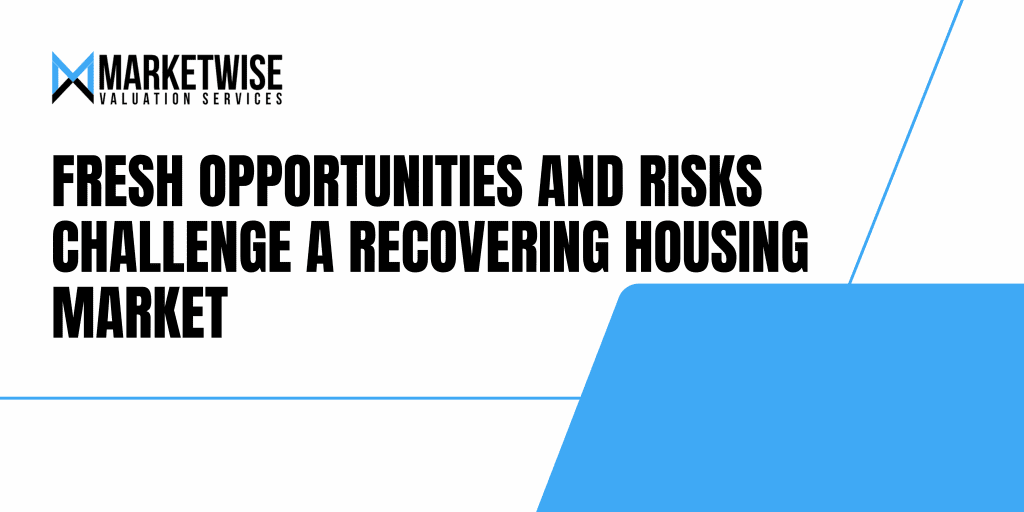The Marketwise Blog, Feb 6th

In 2025, the U.S. housing and financial scenes are buzzing with energy—combining fresh opportunities with hidden challenges that could reshape everything from your next home purchase to major investment moves. This article explores the twists of evolving policies, market trends, and strategic shifts that make today’s economic landscape as unpredictable as it is exciting.
Opportunities and Risks Emerging to Challenge Housing Recovery
In 2025, the effects of the Trump administration’s immigration and economic policies continue to shape the housing market, presenting both opportunities and risks. On one hand, tighter immigration controls could lead to slower population growth in key urban centers, potentially easing the pressure on housing demand and opening up opportunities for more measured, sustainable development in suburban and rural markets.
At the same time, his economic policies—characterized by proposed deregulation and significant tax reforms—could spur a wave of speculative investments and robust capital inflows into real estate. However, if these policies contribute to asset overvaluation, the market could face corrections or increased volatility, particularly in areas that have experienced rapid price inflation. Overall, while investors and homebuyers might find attractive entry points and growth prospects in less saturated markets, the combined impact of reduced immigration and lingering economic distortions calls for cautious analysis in navigating a market in flux.
Disappointing New Home Sales Despite Beating Estimates
The latest new home sales report for December 2024 shows a seasonally adjusted annual rate of 698,000 units—up slightly from previous months and last year’s estimates—beating market expectations. However, despite the positive headline numbers, deeper analysis reveals that underlying trends are less promising. Builder confidence has dropped, and negative revisions in recent monthly sales, combined with a persistently high inventory of new and under-construction homes, suggest that housing permits remain at recession-level figures. This cautious sentiment is largely driven by the uncertainty surrounding mortgage rates, which have stayed above 7%, making it difficult for builders to forecast future sales.
Looking ahead, market projections hinge on potential shifts in mortgage rates. A decline to around 6% could provide the necessary boost for homebuilders, possibly spurring an increase in housing construction and permit growth. Conversely, if rates climb back to 7.5% or higher—as some fear based on last year’s trends—builders may continue their cautious stance, risking further delays in construction activity. Additionally, the current oversupply in housing inventory, combined with a weakening construction labor market, raises concerns about a potential economic downturn if the situation worsens, underscoring the fragile balance the housing market faces in 2025.
Treasury Chief Bessent Proposes Relief via Treasury Bond Yields
Treasury Secretary Scott Bessent clarified that while President Trump is not urging the Federal Reserve to cut its short-term interest rates, his focus remains on lowering longer-term borrowing costs by reducing yields on the 10-year Treasury note. In an interview with Larry Kudlow, Bessent explained that factors such as the economic growth outlook, inflation expectations, and Treasury supply play significant roles in shaping these longer-term rates. Despite the Fed’s recent pause in rate cuts following a series of reductions, the administration’s strategy has shifted from demanding lower short-term rates to influencing market dynamics through fiscal policy measures.
The administration’s broader economic approach includes initiatives such as tariffs aimed at reshoring manufacturing, permanent adoption of the 2017 tax cuts, and efforts to lower energy prices—all encapsulated in the “3-3-3” plan to reduce the deficit, sustain growth, and boost oil production. While Trump recently acknowledged that the Fed’s decision to maintain rates was appropriate, concerns linger over the impact of these policies on inflation and borrowing costs. As the administration positions its policy mix to manage long-term interest rates indirectly, market observers remain attentive to the interplay between fiscal actions and economic fundamentals that could shape the trajectory of U.S. borrowing costs moving forward.
Wrap Up
The opportunity horizon in 2025 is wide open for change. While the administration’s shifting stance presents significant opportunities for growth, it also brings considerable risks. Broad policy changes could lead to upheaval across markets as many adapt to the new norm under the Trump administration. Be sure to tune into this week’s episode of Marketwise Radio for further coverage of evolving housing policy and economic news!


